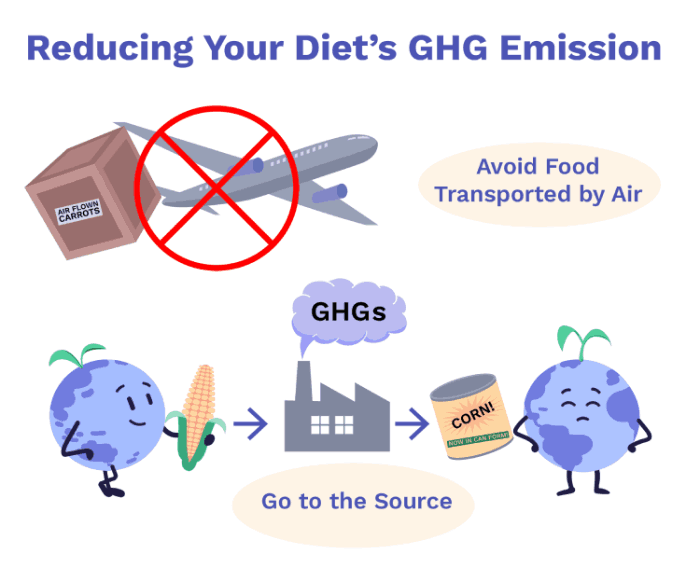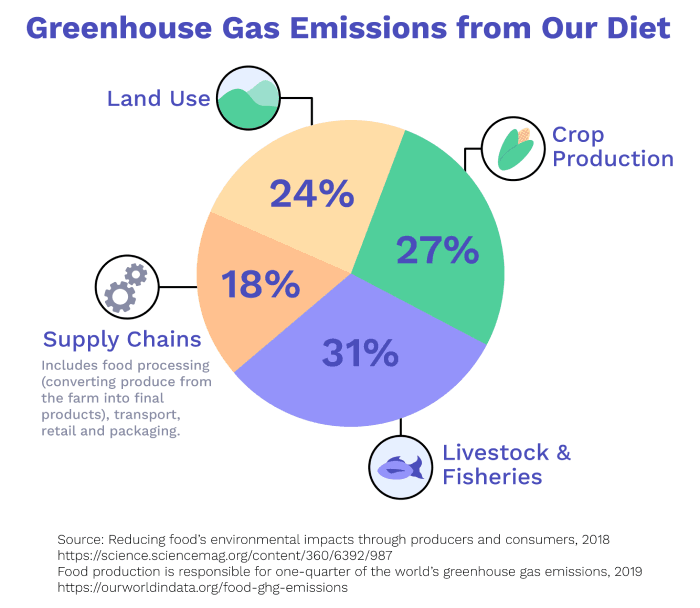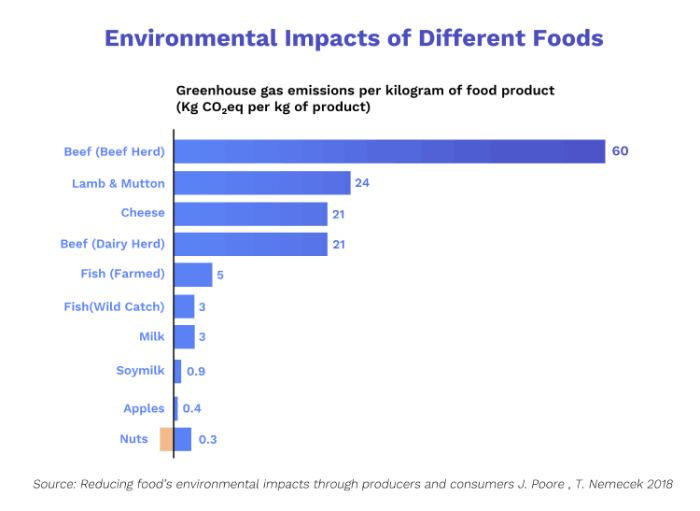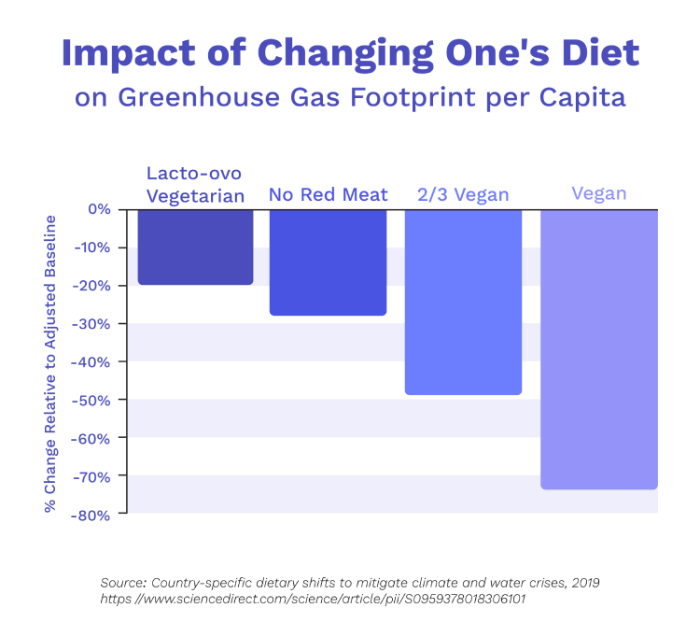Sustainable Diet: What is a Healthy and Sustainable Diet
8 minute read
Updated on: 05 Apr 2021
How can you, as an individual, contribute to solving climate change? Can the actions of one person really make a difference to our planet? In this course, we will be exploring the ways in which an individual can reduce their carbon footprint and consider how effective such actions will be in our fight to solve climate change. First of all, let’s look at how what we eat impacts the world around us.
Our diet has a big influence on climate change, as 26% of global man-made greenhouse gas emissions come from the production and distribution of food . This includes the transport and packaging of food
. It should be noted, however, that the transport of food only makes up a small proportion of these emissions, accounting for only 6% of emissions from food production in the EU
and 5.1% in the US
.
The following pie chart breaks down the 13.7 billion metric tons of CO₂ released by global food each year :
(Note: the supply chain includes food processing (converting produce from the farm into final products), transport, retail and packaging.)
Should we change our diets?
Different foods produce different amounts of greenhouse gas, so it makes sense that changing our diets can have a positive impact on our own carbon footprint .
Did you know that, on average, eating 100g of protein from beef produces 167x more greenhouse gas than eating 100g of protein from nuts ? Take a look at the chart below to see how other foods compare:
(Note: while growing nuts produces more greenhouse gases than some other plant-based foods, replacing cropland with nut trees increases the absorption of carbon from the atmosphere, thus lowering the total net emissions from the final product.)
One way to reduce your carbon footprint is to adopt a largely plant-based diet . By removing animal products from our diets, greenhouse gas emissions from the food sector could be reduced by nearly 50%
.
Even so, a considerable reduction in emissions could still be achieved by reducing how much meat we eat, and shifting to lower-impact meats such as chicken and fish .
How does our food get to our plates?
While the transport of food makes up only a small proportion of emissions (only 6% of emissions from the average diets in the EU and 5.1% in the US
), it still is an easy area in which to reduce emissions from the food supply chain
.
What can we do to reduce emissions from food transport and processing?
- Avoid food that is transported by air - transport by short-haul aircraft emits around 1,700 gCO₂/t-km. By comparison, transport by sea produces the smallest amount of greenhouse gas emissions per km at around 2 g CO₂/t-km
.
- Go to the source - avoid processed foods, as food processing and packaging uses lots of energy.

Tips to reduce your diet’s emissions
How much do food miles matter?
While reducing how far your food has travelled can help reduce emissions in many cases, it is also important to consider how the food was produced in the first place .
For example, in cooler countries, energy is needed to keep sheep and cattle warm. Generally, this is not required in countries with a warmer climate .
Energy is also required to keep food fresh and cold. Some fruits and vegetables are preserved in cold storage for months so that they can be sold out of season .
Clearly, how far your food has travelled is not a reliable indicator of the carbon footprint of your food. Indeed, for beef production, transportation typically accounts for less than 1% of emissions ! In this case, it is not the location of where you buy your meat which makes its carbon footprint high, but the meat itself
.





